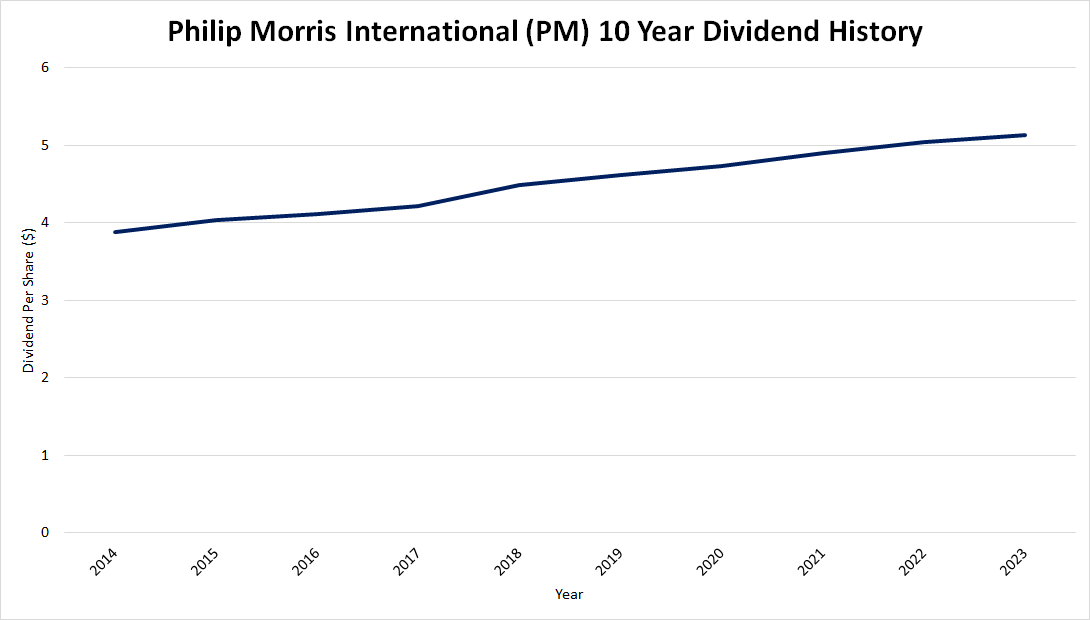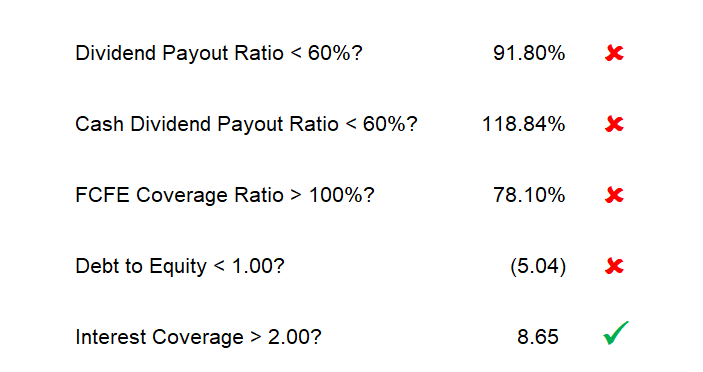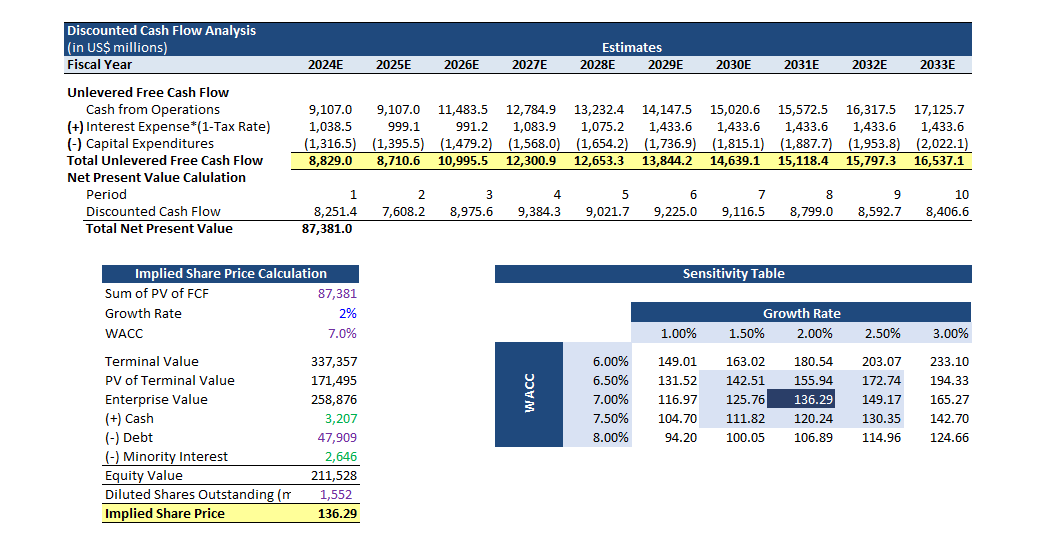While the deadly effects of smoking are well-documented and undeniable, we cannot ignore the significant harm caused by traditional cigarettes. It is important to clarify that we do not condone smoking or its impact on health. Philip Morris International (PM) recognizes that cigarettes are no longer the way forward, and this recognition is driving its ongoing transformation. The company is actively shifting its focus toward Reduced Risk Products (RRPs) as part of its commitment to reducing harm and offering better alternatives.
Philip Morris International (PM), with a history spanning over 175 years in the tobacco industry, has long been a dominant force in the global cigarette market. However, in recent years, the company has embarked on a transformative journey, pivoting towards Reduced Risk Products (RRPs) in response to changing consumer preferences and health concerns.
Innovative products like IQOS, a heat-not-burn tobacco system, and ZYN, a nicotine pouch offering are at the forefront of this transformation. These products represent PM's commitment to a smoke-free future while maintaining its strong market position and financial performance.
This strategic shift towards RRPs and their higher margins (relative traditional cigarettes) should enhance profitability and free cash flow in the coming years. The transition to a smoke-free future shouldn’t compromise the company's robust cash flow or reputation for reliable dividends.
By balancing its legacy tobacco business with investments in next-generation products, Philip Morris is positioning itself as an attractive option for investors seeking both stability and growth.
Dividend History
Even though Philip Morris International has been in business for over 175 years, it has undergone several different corporate structures. Philip Morris’ current corporate structure came about when Altria spun off Kraft Foods in 2007 to be a standalone tobacco company. Then in 2008, Altria split up its tobacco business into two new companies. Altria (MO) kept the U.S. tobacco business and Philip Morris International (PM) got the international tobacco business.
Philip Morris has paid a dividend since its spin-off in 2008 and over the last 10 years, it has grown its dividend at a 4.24% compound annual growth rate. This is a lower rate than we’re usually looking for with dividend stalwarts but Philip Morris is also our highest-yielding position. Its current yield is 4.5%. We’re OK with the lower dividend growth rate because of the higher starting yield.
Dividend Safety
Despite all the red X’s above Philip Morris’ dividend is safely covered.
Marketing is an operational cost to grow your business. Philip Morris and other tobacco companies are very limited in how they can advertise and market their products, if at all. Philip Morris sends the money that would've gone to marketing back to shareholders. That’s why its dividend payout ratio and cash dividend payout ratio exceed the 60% threshold.
The Free Cash Flow to Equity (FCFE) Coverage Ratio falls below 100% because Philip Morris paid down some of the debt they took on in their recent purchase of Swedish Match.
Philip Morris’ negative debt-to-equity ratio is another accounting gimmick. Share repurchases count as a contra item in the calculation of shareholder equity. Philip Morris has bought so many shares that its shareholder equity is negative.
What we need to know is Philip Morris's interest coverage ratio and how well the company covers its debt interest payments. At 8.65x, Philip Morris easily covers all its financial obligations.
Quality Factors
High Barriers to Entry
Regulation
While Tobacco products have been heavily regulated for decades, they had been exempt from Federal health and safety laws until the Family Smoking Prevention and Tobacco Control act was signed in to law in 2009. The act gives the Food and Drug Administration (FDA) the authority to regulate the manufacturing, distribution, and marketing of tobacco products.
In 2016 the FDA finally had the systems to regulate tobacco products. All new consumer tobacco products, like nicotine pouches, must submit a Premarket Tobacco Application (PMTA) and receive approval by the FDA before they can be sold to the public in the U.S. Any product brought to market before 2016 still needs to go through a full FDA review. Still, they’re allowed to continue to sell their product in the U.S. until a formal review is completed.
From the Odd Lots podcast Zyns, Vapes and the Very Weird Market for new Nicotine Products
So, if you want to start a product now, you cannot sell a single unit in the United States until the FDA gets back to you with your application.
So, to your question of you want to start a pouch company, we just can’t. If you wanted to do it legally.
What you would have to do is you’d have to raise some money, develop your product, run a whole battery of test, including stability tests, which could take a year because you need to wait around to see if the product is different at month twelve than month one.
Then you submit that data and the huge packet, it’s thousands and thousands of pages to the FDA.
They review it, you’re at the back of the queue.
This could take tens of millions of dollars. There’s rumors that bigger companies have spent millions of dollars on these applications.
The time and cost of bringing a new competing product to market within the U.S. are extremely high hurdles to overcome. If you had a product on the market before 2016, you’ve been granted a large regulatory head start on all your competitors. Zyn entered the U.S. market in 2014, and it was a big reason why Philip Morris bought Swedish Match.
Switching Costs
Addicting
The biggest switching cost with cigarettes and other nicotine products is the fact that nicotine is addicting. It is up there with Cocaine and Heroin.
All three target the same mesolimbic dopamine pathway in our brain. This pathway plays a central role in the brain's reward system and is heavily involved in the experience of pleasure and reinforcement. This reward system is so strong that only 7-10% of smokers successfully quit each year.
Tobacco users also develop strong associations between their tobacco use and pleasurable activities. For example, smoking a cigarette while drinking coffee or alcohol. These associations create a conditioned response where the presence of one stimulus (e.g., coffee) triggers the craving for the other, a cigarette.
Part of that association is the type of nicotine delivery system, the specific brand, and the flavor. That’s why it’s hard to get tobacco users to change their delivery systems and brands. A Marlboro Red Smoker will not have the same pleasurable experience with their coffee if they have to smoke a Camel Blue or pop a ZYN nicotine pouch.
This is why first mover advantage is crucial in the new nicotine pouch category. Get a hold of the consumer first so that they can build those behavioral associations strengthening their bond to your product.
ZYN has the first-mover advantage in nicotine pouches within the U.S. When a competitor finally overcomes the FDA regulatory hurdle, Zyn nicotine pouches could have a 5 to 10-year head start and an extremely “loyal” customer base.
Catalysts
Reduced Risks Products
Philip Morris’ Reduced Risk Products (RRPs) such as IQOS and ZYN nicotine pouches are a key driver of future growth and profitability.
As cigarette consumption declines, RRPs present a sustainable alternative that delivers significantly higher margins.
IQOS
IQOS, Philip Morris' flagship RRP, is a heated tobacco product designed to provide smokers with a less harmful alternative to traditional cigarettes by heating tobacco instead of burning it. This innovation has already been widely adopted in key markets, including Japan and parts of Europe, and is driving significant revenue growth.
According to Philip Morris IQOS generates 2.5 times the revenue and 2.6 times the profit of a traditional cigarette pack.
Zyn
Philip Morris' acquisition of Swedish Match, a leader in the nicotine pouch market, has given the company another growth engine in the form of ZYN nicotine pouches. These pouches offer a smokeless, spit-free way to consume nicotine, catering to consumers who want to avoid the health risks of smoking or vaping.
According to a Goldman Sachs analyst, a canister of ZYN pouches generates six times the profit of a pack of traditional cigarettes. This outsized profitability is largely driven by their lower production and distribution costs compared to combustible tobacco products.
Together, IQOS and ZYN offer substantial growth potential in both developed and emerging markets, where governments are increasingly supporting risk-reduction alternatives. This shift enables Philip Morris to move beyond traditional cigarettes while maintaining robust profitability.
Cigarettes
Despite the global decline in cigarette consumption, cigarettes remain a critical source of growth and financial stability for Philip Morris.
The legacy tobacco business continues to generate significant cash flow, providing the company with the financial resources to fund its transition into Reduced Risk Products (RRPs) like IQOS and ZYN. In markets where smoking rates remain steady or decline more slowly, Philip Morris can leverage its strong brand loyalty and pricing power to maintain profitability from its cigarette products.
Minimal capital reinvestment is needed to maintain Philip Morris’ legacy tobacco products. Philip Morris can use the cash flow from cigarettes to reinvest in the development, marketing, and global rollout of its RRPs.
In certain emerging markets cigarette consumption remains resilient, and Philip Morris has room to grow its market share and revenues. These regions present opportunities for continued cigarette sales, providing Philip Morris with the dual benefit of strong cash flow from legacy products and the potential for future expansion through RRPs as consumer preferences evolve. In this way, cigarettes are still a catalyst for growth, not just in their own right, but as a crucial enabler of Philip Morris' long-term strategy.
Risks
Taxes
Governments worldwide often target tobacco and nicotine products with high excise taxes to reduce consumption and generate revenue.
Research shows that for every 10% price increase, overall consumption declines by 3-5%. The impact is even more pronounced among youth, where a 10% price hike leads to a 5+% decrease in consumption.
If concerns arise about rising teen use of new nicotine products, higher taxes will likely be the primary policy tool to curb consumption.
In 2022 alone, cigarette excise taxes generated over $11 billion in revenue for states and municipalities within the U.S. As cigarette use declines, local governments may turn to new or increased excise taxes on newer nicotine products to replace lost revenue.
This shift could potentially reduce demand for products like ZYN, causing Philip Morris to experience slower growth or, in a worst-case scenario, no growth.
Regulatory environments are also unpredictable, with many countries pushing for stricter regulations on both traditional cigarettes and newer products like IQOS and ZYN.
The implementation of higher taxes on these products could significantly slow their adoption, potentially cutting into Philip Morris' expected growth and profitability.
Zyn
Because ZYN nicotine pouches are a catalyst for growth at Philip Morris, they’re also a risk.
There’s regulatory risk. ZYN could face increasing scrutiny from governments and health authorities. Although it’s marketed as a "safer" alternative to smoking, regulators could impose stricter laws on nicotine levels, packaging, or marketing, which would limit its growth potential. Additionally, certain markets may ban or heavily tax nicotine pouches in the future, cutting into sales and profitability.
Competition in the nicotine pouch space is intensifying. Several companies are aggressively expanding their presence in this market. If Philip Morris fails to maintain a competitive edge in terms of branding, pricing, or product innovation, ZYN’s market share could shrink, limiting the expected upside from this product line.
While ZYN has shown strong growth, its long-term success depends on continued consumer acceptance and loyalty. If health-conscious consumers decide to forgo nicotine altogether or turn to other alternatives the demand for ZYN could flatten or decline, hurting revenue projections.
Litigation
Health-related lawsuits remain a primary concern, with the potential for large settlements or compensation orders stemming from smoking-related illnesses.
As Philip Morris shifts towards Reduced Risk Products (RRPs) like IQOS and ZYN, new product liability risks emerge, especially if long-term health effects prove harmful. Also, if these products continue to appeal to younger consumers then Philip Morris’ marketing practices could come under greater scrutiny with the possibility of lawsuits about targeting minors.
Valuation
Our base case discounted cash flow scenario for Philip Morris is maintaining its current margin profile with consensus growth estimates over the next few years. This produces a fair value estimate of $136 per share.
As mentioned above, ZYN, iQOS, and Philip Morris RRP products have higher margin profiles than its legacy cigarette business. Philip Morris wants its overall business to be more than two-thirds smoke-free by 2030. If these products continue their growth trajectory and meet this goal, then Philip Morris will be more profitable than it is now and worth far more than our base case scenario.
Disclaimer
American Money Management, LLC (AMM) is a SEC registered investment advisor who serves as a portfolio manager to private accounts. AMM partners, associates, employees and clients of the firm may buy or sell investments mentioned without prior notice. This report should not be considered investment advice and is for educational purposes only. The opinions expressed do not constitute a recommendation to buy or sell securities. Investing involves risks, and you should consult your own investment advisor, attorney, or accountant before investing in anything. Current stock quotes are obtained at Yahoo! Finance. Prices are as of the close of the market on the date for which the price is referenced.






